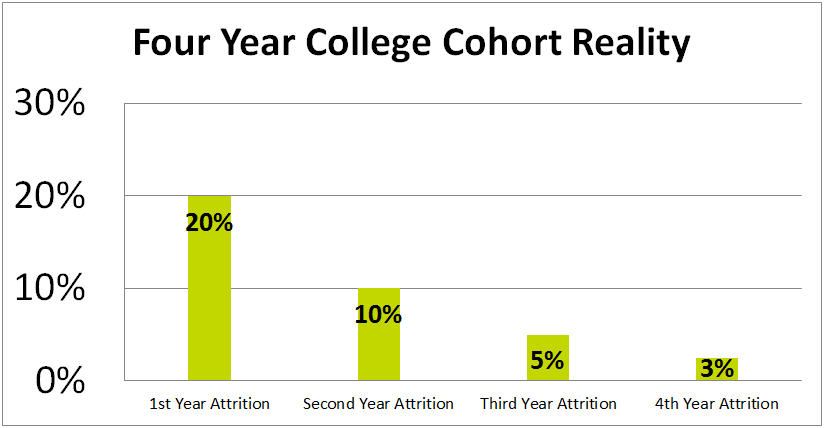enrollment
Three ways to navigate the complexities of college completion planning
As I travel the country and work with our campus partners I am starting to hear more and more about completion planning. For the past three or four decades, we had really focused on first year retention planning and rightly so because it is still the time period during the student lifecycle, for most colleges and universities, where the greatest attrition occurs. But, now I’m being asked what about years two, three, and four? Should we have a completion plan? How should we define completion? How do we plan for it?
One of the first things I’d recommend is to be aware of the national conversation regarding completion. Some would say we should focus on on-time graduation rates—we should no longer accept the 150 percent of time metric as a standard of performance. I think that may be a perfect ideal and we should try to plan for that, but I also believe that you may need a framework in order to move in that direction. Toward that end, here are three steps to take in order to get your completion planning off to a strong start.
Three steps to focus college completion planning
First, please review what I call your cohort’s reality. What really happens as they persist toward completion? If you’re at a four-year institution, is it true for your institution that yearly attrition for first-time, full-time students is about half as much in each subsequent year and that, if students are retained to the 5th term (third year), attrition is low single digits beyond that term? If you’re a two-year institution, is it the case that attrition is highest from second to third term and begins to decline from third to fourth term?
Second, once you know your cohort’s reality, test the following planning conditions at your institution. I believe they are true at many colleges and universities.
- Many colleges and universities have not developed a yearly Attrition Curve, using predictive analytics, which helps allocate resources efficiently to develop targeted advising, outreach, and intervention plans.
- Many colleges and universities don’t have a completion planning framework beyond year one to manage the desired outcomes.
- Who understands the cohort reality?
- What are the desired retention and or completion outcomes each year of the student lifecycle?
- Who is responsible for strategy development throughout the student lifecycle?
- Many colleges and universities have not prioritized or effectively developed the must-have student success strategies to manage retention and completion. Some examples include:
- Lifecycle persistence and progression data
- Realistic goal-setting and allocation of resources
- Effective planning
- Academic advising/degree planning
- Course scheduling, guided pathways to graduation, co-requisite remediation (I know this one is very controversial), other academic management strategies
- First-year transitions
- Experiential learning
- Early-alert
- Academic support
- Quality service initiatives
- Academic recovery
- Recruit-back strategies
- Co-curricular/residence life programming
- Use of Title III or V
- Many colleges and universities have not effectively developed and integrated these strategies throughout the student lifecycle.
Third, and finally, start to make inroads with your completion planning efforts using the data. For example, if you know your cohort’s reality looks like the chart below, and you believe you have planned well during year one, then move to year two and assess the list of planning conditions above under step two for year two. Do you have a robust set of strategies, such as the long list of 14 above, for year two? Who owns the planning effort? Are you able to predict which students who return to year two will return to year three?
So, I can hear some of you saying, “we don’t do this well for year one and you want me to move into year two?” No, that’s not what I’m saying. I say apply this framework to your planning efforts throughout the student lifecycle and if you still need to work on year one, do that first. However, some of you may believe you may have maximized your year one outcomes and if that’s the case maybe it’s time to work on your completion plan and move into year two and perhaps year three.
Questions? Want to discuss your completion planning?
My colleagues and I are available for consultation and to conduct workshops for college completion planning teams. Contact us at 800.876.1117 or email me at tim.culver@ruffalonl.com.
